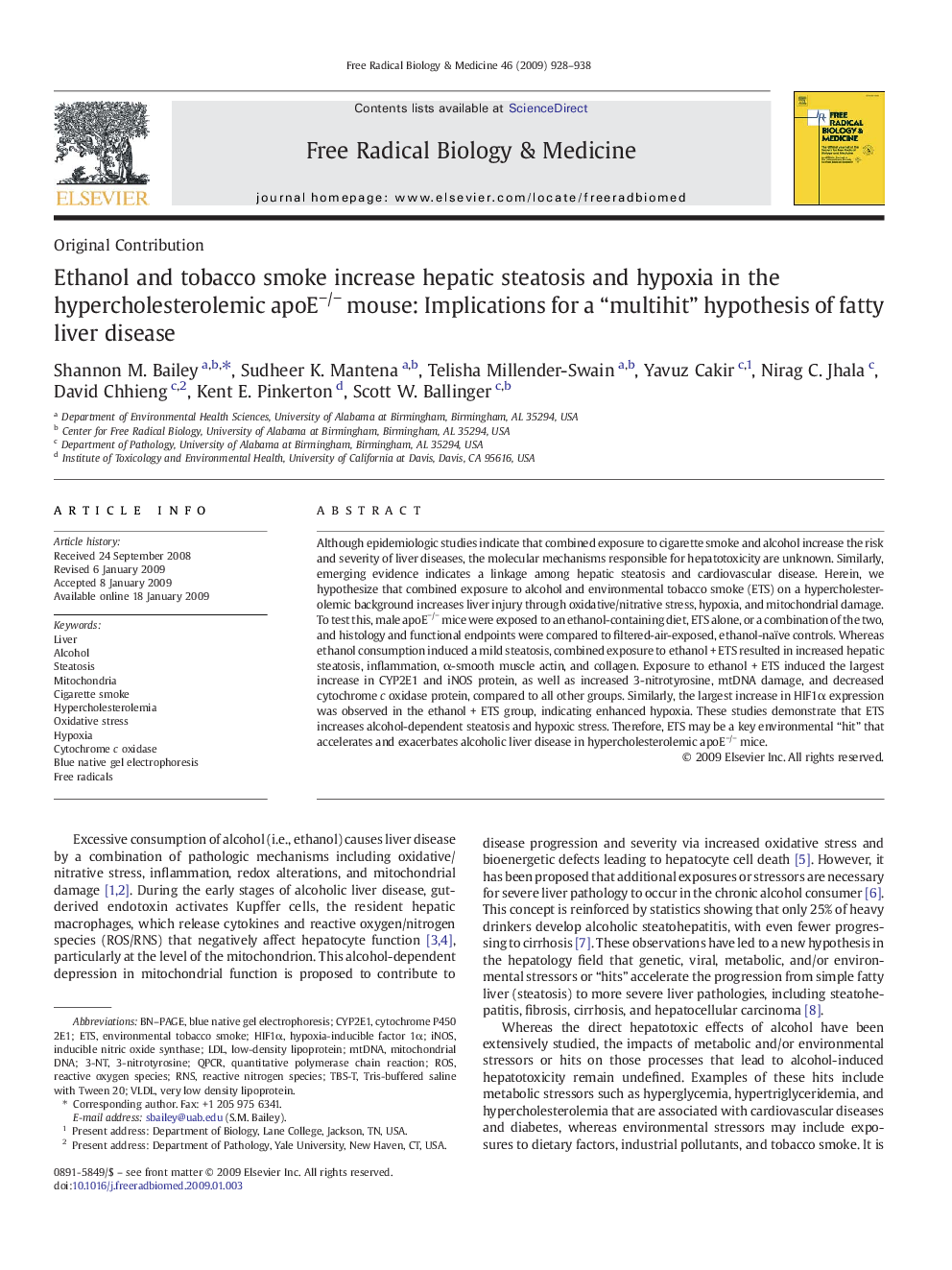| کد مقاله | کد نشریه | سال انتشار | مقاله انگلیسی | نسخه تمام متن |
|---|---|---|---|---|
| 1910188 | 1046757 | 2009 | 11 صفحه PDF | دانلود رایگان |

Although epidemiologic studies indicate that combined exposure to cigarette smoke and alcohol increase the risk and severity of liver diseases, the molecular mechanisms responsible for hepatotoxicity are unknown. Similarly, emerging evidence indicates a linkage among hepatic steatosis and cardiovascular disease. Herein, we hypothesize that combined exposure to alcohol and environmental tobacco smoke (ETS) on a hypercholesterolemic background increases liver injury through oxidative/nitrative stress, hypoxia, and mitochondrial damage. To test this, male apoE−/− mice were exposed to an ethanol-containing diet, ETS alone, or a combination of the two, and histology and functional endpoints were compared to filtered-air-exposed, ethanol-naïve controls. Whereas ethanol consumption induced a mild steatosis, combined exposure to ethanol + ETS resulted in increased hepatic steatosis, inflammation, α-smooth muscle actin, and collagen. Exposure to ethanol + ETS induced the largest increase in CYP2E1 and iNOS protein, as well as increased 3-nitrotyrosine, mtDNA damage, and decreased cytochrome c oxidase protein, compared to all other groups. Similarly, the largest increase in HIF1α expression was observed in the ethanol + ETS group, indicating enhanced hypoxia. These studies demonstrate that ETS increases alcohol-dependent steatosis and hypoxic stress. Therefore, ETS may be a key environmental “hit” that accelerates and exacerbates alcoholic liver disease in hypercholesterolemic apoE−/− mice.
Journal: Free Radical Biology and Medicine - Volume 46, Issue 7, 1 April 2009, Pages 928–938